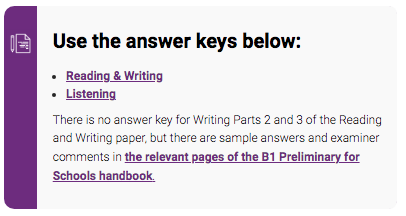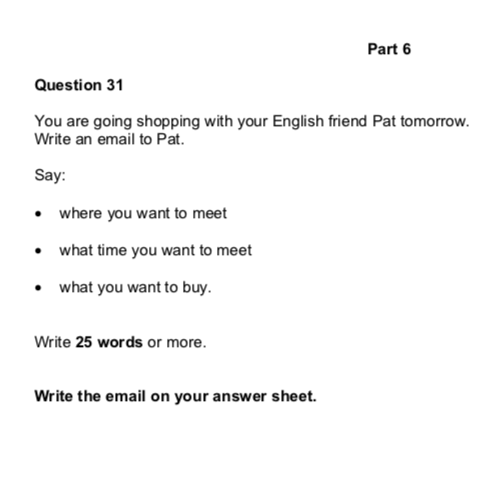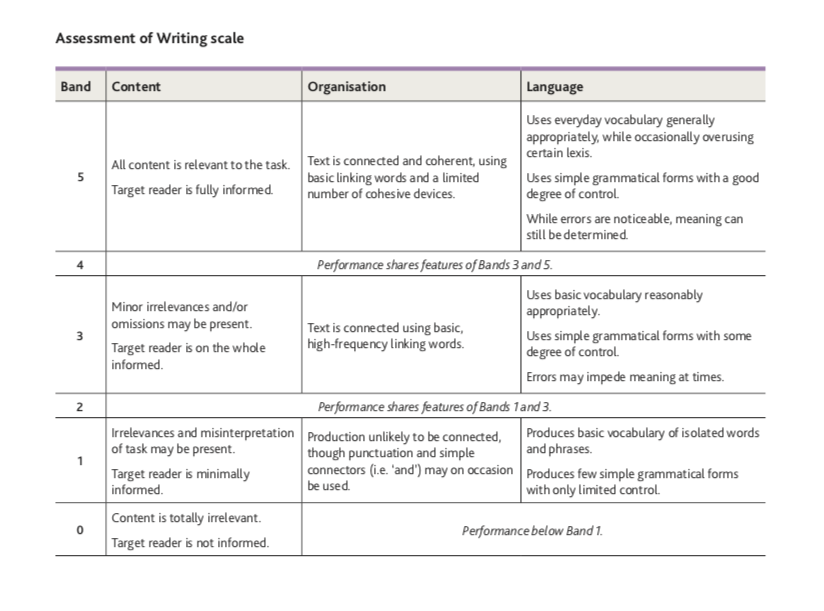How to do A2 Key Reading & Writing Part 6 well
In this post, I’m going to analyse A2 Key Reading and Writing Part 6. This is the first of the two writing tasks in A2 Key Paper 1 Reading and Writing.
I’m going to analyse the sample task from the A2 Key for Schools Reading and Writing Paper, available here: https://www.cambridgeenglish.org/Images/504343-a2-key-for-schools-2020-sample-tests.zip
The input/context
At the start, we are given an outline of the situation, the context. In the Sample Paper in the A2 Key for Schools, we read:
You are going shopping with your English friend Pat tomorrow.
The name of the person we need to write to is specified. In this case, Pat.
Tip: The name is usually unisex, so we can choose to refer to them as he or she (if needed – in fact if we are writing to them we will probably address them as ‘you’.)
The text
We are also told what kind of text we should write. In Part 6, it’s always a message – a note or an email usually.
Tip: Make sure your students know how to write emails and notes.
The start: a greeting
- Hi Pat, / Hello Pat!
- Dear Pat,
The end:
Bye! / Goodbye! / See you (soon)!
Your name: Anne
The content
We are given three things to include. In this case:
- where you want to meet
- what time you want to meet
- what you want to buy
Tip: Write 3 full sentences – 1 sentence to answer each question.
e.g.
- Let’s meet at the bus station.
- 5 pm would be the best time for me.
- I need to buy a present for my sister.
Notice that I’ve already written 25 words!!!
The number of words
In this writing task, 25 words or more is always asked for.
Notice that just by writing three sentences to answer the three questions above, I’ve already written 25 words!!!
Below the three points, the kind of text is again specified. (an email).
Checklist for A2 Key Reading & Writing Part 6
The Assessment Scales
Answers to A2 Key Reading and Writing Part 6 are assessed on three areas: Content, Organisation and Language. There is a maximum of 5 marks per area.
Content
There must be answers to all three questions.
In this task, the email reader (Pat) should be clear about where to meet, at what time and what the writer wants to buy.
Organisation
The sentences should be in a logical order, with basic linkers to express reason and sequence help to get top marks for organisation.
Cohesive devices like personal (you, it, etc) and relative pronouns (e.g that, who) are also useful for good organisation.
Language
The questions in Part 6 usually involve making suggestions and expressing preferences.
Expressions like ‘Let’s’, ‘How about’, ‘Shall we’ work well.
Everyday vocabulary is normally sufficient but it is a good idea to try and avoid repeating words if possible.
Basic tenses (e.g. present simple, past simple, will and going to) and simple grammatical forms are fine.
Re-reading to check spelling and punctuation is extremely important.
Note: As long as errors do not prevent us from understanding the text, they should not be penalised too much (or perhaps not at all).
For further work on A2 Key Reading and Writing Part 6, I’d recommend the lesson plan which is available on the Cambridge English website. It takes two sample answers and looks at what is good or weak about them.



